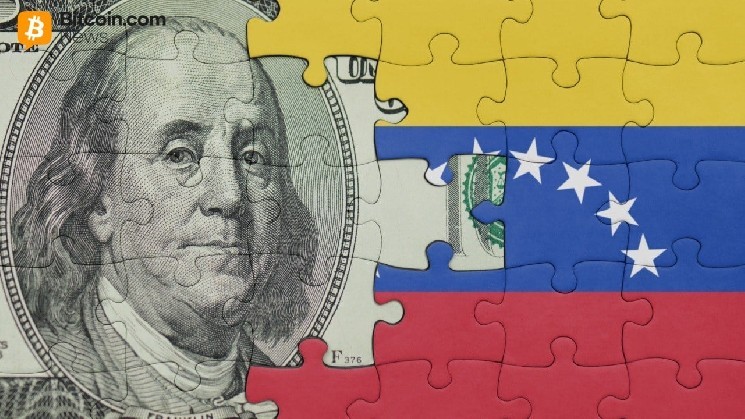
Richard Ujueta, president of Cavecom‑e (the Venezuelan Electronic Commerce Chamber), said that because of scarce dollar cash, most payment activity has moved to USDT. He added that banks should implement USDT payments in point‑of‑sale devices by December. Venezuelan Banks Should Adopt USDT by December, Analyst States The Facts: Venezuela is advancing towards a real integration of stablecoins like USDT into its banking and financial system, according to Richard Ujueta, president of Cavecom-e, the Venezuelan Electronic Commerce Chamber. Ujueta explains that both cryptocurrencies and stablecoins, which are pegged to the value of the U.S. dollar, are now part of the economic tissue of the country. The scarcity of foreign currency in cash, and the difficulties linked to trading these dollars, are the main drivers behind this change. Quoted by local press, he stated: There has been a significant shift in payment systems toward USDT. Binance currently manages over 5.5 million Venezuelans with open accounts. Ujueta stressed that because of this shift, he expected private banks would embrace stablecoins, especially USDT, directly. “By the end of the year, the national banking network will accept USDT through payment devices,” he declared. He judged this upcoming evolution as disruptive but required, given the changes that the Venezuelan economy is going through. As an example, Ujueta revealed that some lease agreements already contemplate stablecoin payments. “The shortage of cash dollars is leading even lease contracts to include payments in this stable cryptocurrency in their clauses,” he concluded. Why It Is Relevant: While Venezuela has reportedly embraced stablecoins as payment tools both for international settlements linked to crude sales, and for internal payments, banking channels have not been used. While some companies provide on and off ramping services for stablecoins, banks implementing these services would be a step up for Venezuela, facilitating the rise of several use cases tied to USDT. Remittances would be a key use case, simplifying them by removing middlemen from the equation and making them cheaper at the same time. Looking Forward: Banking integration of USDT in Venezuela would be a relevant experiment that, if successful, would entice more economies to hop onto the stablecoin train. Nonetheless, adopting USDT, which is a token issued by a private company, would also raise additional risks for holders and banks not contemplated in current banking regulation. FAQ What is Venezuela’s recent development regarding stablecoins?Venezuela is working towards integrating stablecoins, particularly USDT, into its banking and financial system to address foreign currency shortages. What factors are driving this shift towards stablecoins?The scarcity of cash in U.S. dollars and challenges in trading these dollars are major reasons for adopting stablecoins as part of the country’s economic framework. How are private banks expected to participate in this transition?Richard Ujueta of Cavecom-e suggests that by the end of the year, Venezuelan private banks will begin accepting USDT through payment devices. What implications does this integration have for the Venezuelan economy?If successful, this initiative could streamline remittances and internal payments, but it also introduces potential risks associated with using a privately issued token like USDT.
Australia’s Financial Regulator Flags Broader Oversight of Crypto Under Updated Guidance
1 hour ago
Binance Whales Are Quietly Buying Up Uniswap’s UNI Token Amidst Market Weakness
1 hour ago
Sam Altman Confronts Backlash Over GPT-5 Rollout, Unveils Expanding Vision During AMA
2 hour ago
AI Backlash Is Here: Even Sophisticated Users Are Getting Sick of Tech's Latest Obsession
3 hour ago
Ethereum Set to Debut 'Key to Layer-2 Scaling' as Fusaka Upgrade Clears Final Test
3 hour ago
XRP-Based Loans to Launch in December: Details
3 hour ago